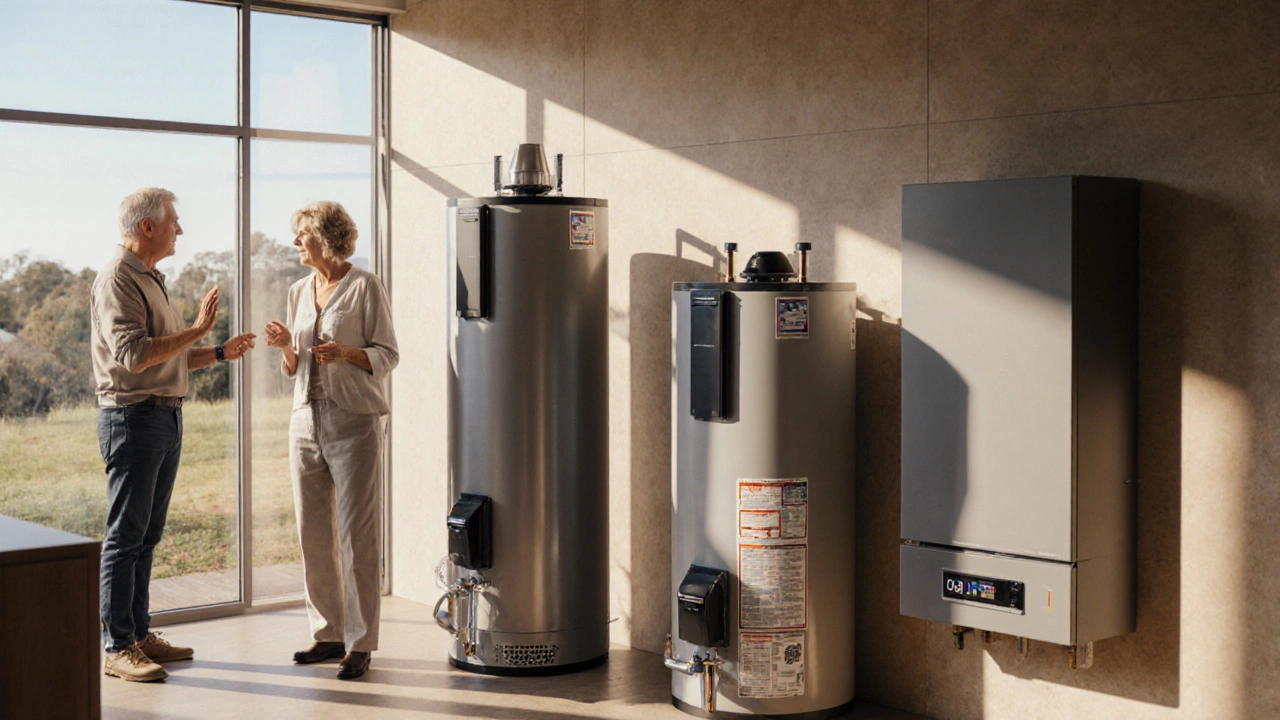Water Heater Durability: How Long Can Your Hot Water System Last?
When thinking about Water Heater Durability, the ability of a water heater to keep delivering hot water over many years. Also known as water heater lifespan, it matters to anyone who relies on a steady shower or clean dishes. A durable system saves money, avoids cold surprises, and reduces waste. Below you’ll see how core parts like the Anode Rod, a sacrificial metal that guards the tank from rust and Sediment Buildup, mineral deposits that eat away at heating efficiency shape that longevity.
Key Factors That Influence Longevity
First off, the type of tank matters. Traditional tanks with a glass lining tend to outlast newer polymer‑lined versions, but both rely heavily on the anode rod to prevent corrosion. When the rod is depleted, the steel inside the tank starts to rust, cutting the life span dramatically. Regular checks every 12‑18 months keep this issue in check. Next, water quality plays a huge role. Hard water leaves mineral layers—those are the sediment we mentioned. Over time, sediment blankets the heating element, forcing it to work harder and wear out faster.
Speaking of the heating element, it’s the heart of an electric water heater. If the element overheats because of sediment, it can crack or burn out. That’s why flushing the tank twice a year is a simple habit that can add five or more years of service. Temperature setting also matters; cranking the thermostat to 75 °C (167 °F) speeds up wear. Most experts recommend 60 °C (140 °F) for a balance of safety and efficiency.
Installation quality is another hidden driver. A loose pressure relief valve or poor venting can cause pressure spikes, leading to leaks or even tank rupture. A qualified technician ensures all connections are tight and the vent pipe is correctly sized. DIY fixes can be tempting, but a small mistake often costs far more in the long run.
Now, let’s talk maintenance frequency. A homeowner who schedules an annual service gets a professional inspection of the anode rod, heating element, and overall tank condition. This proactive approach catches early signs of failure—like a faint metallic taste or a slight drop in hot‑water output—before they become emergencies. In contrast, owners who wait until the water runs cold often face pricey replacements.
Energy source also sways durability. Gas‑burner heaters face flame‑related wear on the burner and heat exchanger, while electric units wrestle with element fatigue. Both benefit from cleaning, but gas models need periodic burner cleaning to avoid soot buildup that can cause uneven heating.
Location of the water heater can’t be ignored. Units tucked in cramped closets may suffer from poor airflow, leading to higher operating temperatures and faster component breakdown. Giving the heater breathing space and keeping the surrounding area dry prevents rust on external fittings.
Finally, the age of the system sets a baseline. Most manufacturers quote 8‑12 years for standard tanks, but real‑world data shows many units push past 15 years if the anode rod is replaced on schedule and sediment is flushed regularly. When a system hits the 20‑year mark, the cost‑benefit analysis often tips toward replacement, especially if multiple parts have already been swapped.
All these pieces—anode rod health, sediment levels, heating element condition, installation quality, and regular maintenance—form a network of factors that directly impact water heater durability. Understanding how they interact helps you make smarter choices, whether you’re deciding to repair a noisy tank or plan for a future upgrade. Below you’ll find a curated set of articles that dive deeper into each of these topics, offering step‑by‑step guides, cost breakdowns, and expert tips you can apply right away.

Longest‑Lasting Water Heater Brands in Australia
Discover which water heater brands last longest in Australia, compare lifespan, warranty and price, and learn maintenance tips to extend your unit's life.